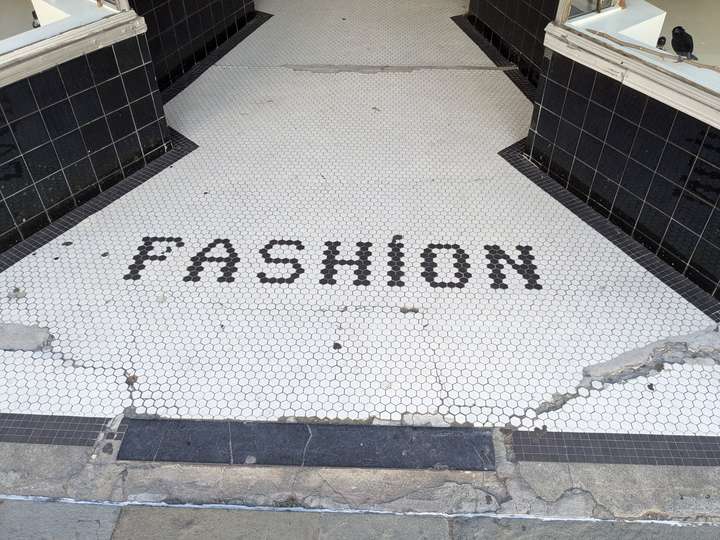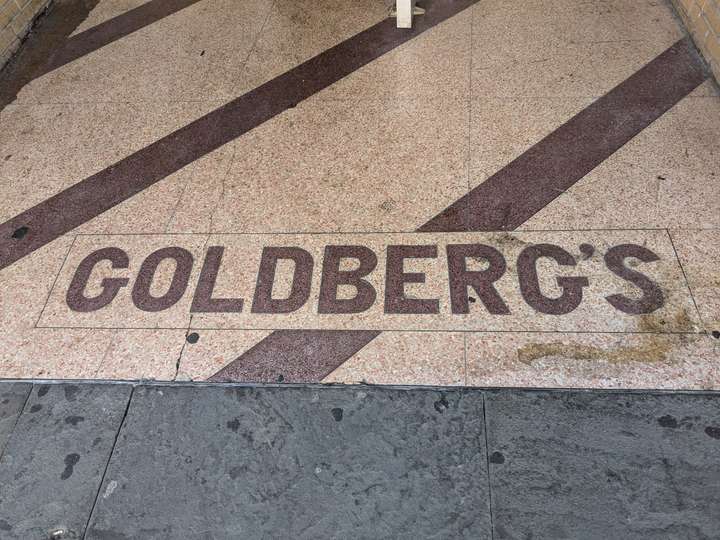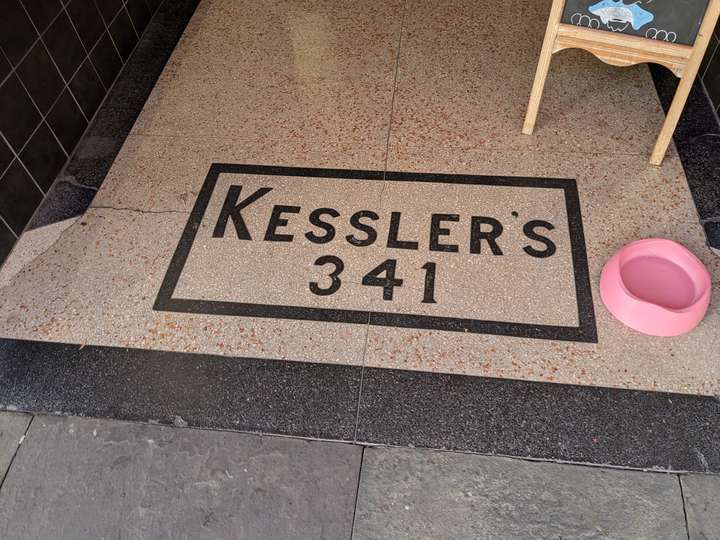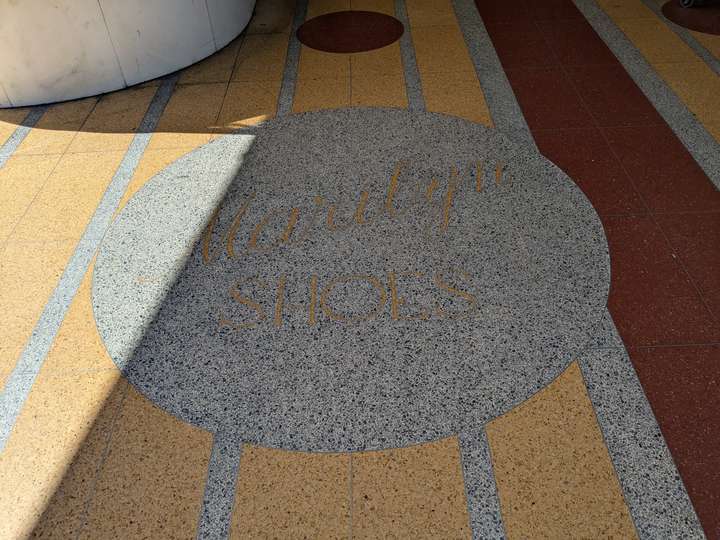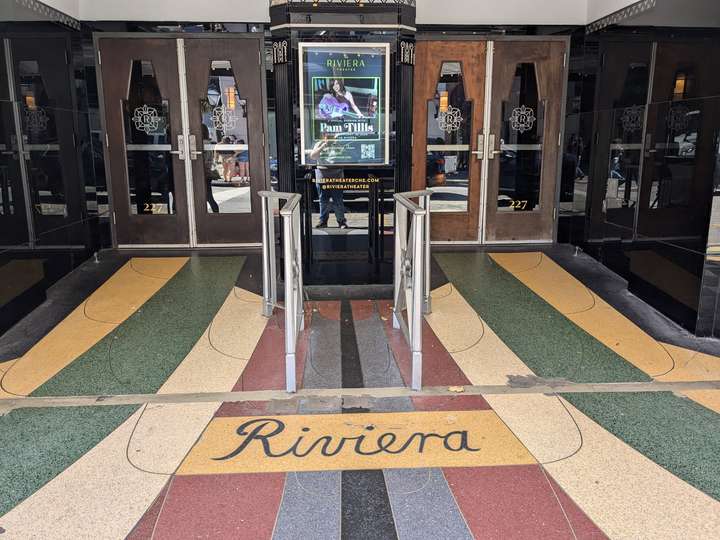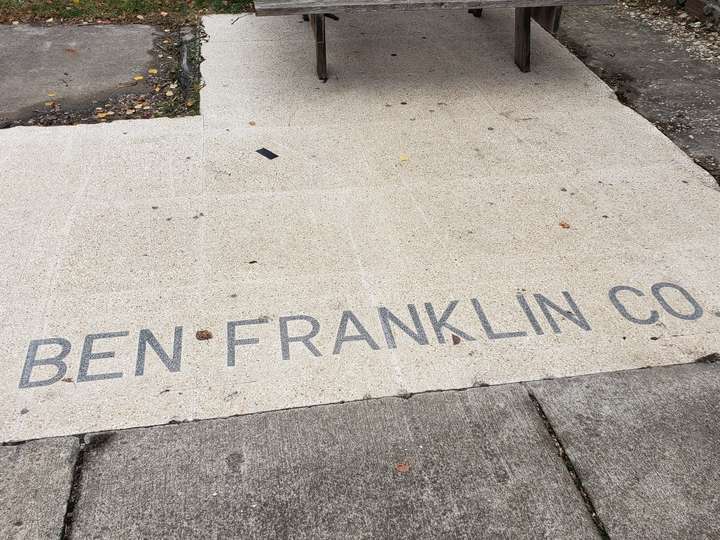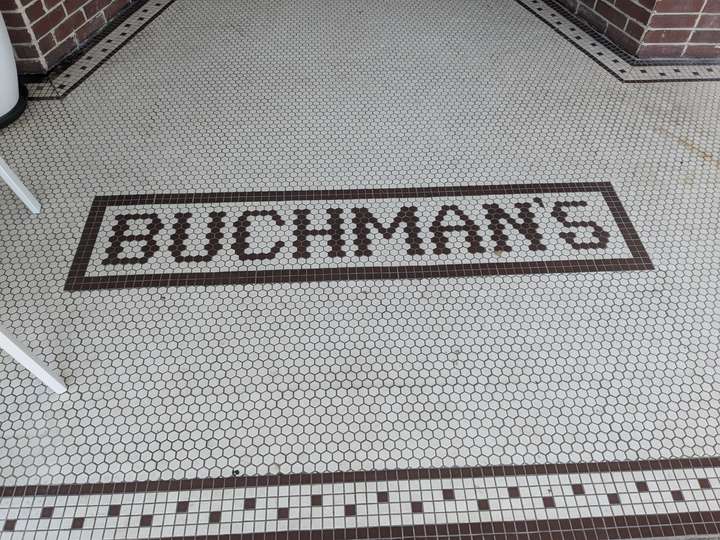Lookin Down - Terrazzo & Tile
While strolling through a downtown or other urban center, you're naturally looking up, towards the thousands of dollars of flashy signage fighting for your attention. The ground is for welcome mats, trash, and cracks in the pavement, and most people direct their eyes elsewhere. However, if you're lucky, in store entryways across America, you can find terrazzo or tile pattern entryways, weathered but beautiful remnants of tenants long past. There's two main styles- terrazzo, a composite made of colorful flecks mixed with a base color, and tile designs that use a large number of small, square or hexagonal tiles.
My pictures are going to be split up by location, with a final heading for the one-offs
Arcadia, FL
Arcadia is a small city in and the county seat of DeSoto County, and is most notable for it's historically-registered downtown.
- Jake-Wey is actually the name of one man, a druggist (pharmacist) named Jake Wey, and not a welding of two business partners. Newspapers show Jake Wey lived in Arcadia as far back as 1891, but this brick-built store dates to 1906, the drugstore's permanent new home after the original wooden business district of Arcadia was destroyed by fire. In 1937, the business was rented to a Dr. Louis W. Koch, who operated the business for around 10 years as Koch's Drugstore. (I can't find an exact end date, but he lost a nasty court case over the rental agreement in 1948).
- The E.T. Smith Hardware-Furniture Company goes back to 1891, but as the tile suggests, this newer brick structure dates to 1912. The original business, last owned by Larry Bailey, finally folded in the early 1980s.
- the Heard Opera House (now branded the Old Opera House) is an iconic building in downtown Arcadia that has over the years been a bank, a department store, and more. The finely patterened tile seen here is part of the building's corner entrance facing Oak St & Polk Ave
- Finally, this simpler hexagonal tile entryway belongs to Dozier's General Store, a later tenant of the bottom floor of the Heard Opera House.
Savannah, GA
Savannah is one of my favorite cities, mostly for it's abundance of walkable, historic wood-framed housing, which I'll make a post about sometime soon. However, on it's commercial streets, there's still some great entryways to be found.
- This very striking abstract design doesn't give many hints to it's history; it's next door to another entryway that says "ELEANOR", but aside from that, I can't ferret out anything.
- While a lot of terrazzo you see is for local businesses, chains did them as well, as shown by this entryway for the J.C. Penney Co, partly blocked by the doors of the much more pretentious store that now operates here.[1]
- KARPF is an objectively very funny name to immortalize in speckled granite, and comes from a hat store, opened by Benjamin Karpf in 1935.
- Muhlberg's, is, as far as I can tell, the name of a pawnbroker. The only wrinkle is the address given is a few doors down at 225 W Congress, rather than 223 W Congress where this entrance sits, but it's conceivable that they moved over the years, or the street was renumbered in the intervening century.
Charleston, SC
Now, Charleston was the 'honey hole'. A veritable feast of terrazzo can be found across the downtown commercial district, so much I've had to split it into two galleries.
- This hexagonal tile entryway is pretty simple, and pretty weathered. Tile entryways tend to wear worse than terrazzo, since they're just normally bonded tiles, as opposed to a solid composite.
- Now a Chinese restaurant called New Peking, this humble yellow brick building was originally a clothing store called Goldberg's (1953-1976). A detailed history of this store can be found at the Jewish Merchant Project.
- Morris-Sokol's modern 47,000 sq ft furniture showroom opened its doors in 1957, and served downtown Charleston until 2015, when second-generation owner Joesph Sokol retired. Despite it's prime location, it's been vacant ever since, with the most recent plans to turn it into a hotel dying on the vine during the pandemic.
- While the name Kessler ties back to a few different stores, a 1967 photo survey pins this as G.W. Kessler Kuppenheimer Clothes.
- The same scrapbook page gives the identity of our next store- Lesser's Credit Jewelry, a name that I gotta say, doesn't inspire confidence.
- Lesser-Tanenbaum comes from Louis Tanenbaum, who opened a men's clothing store with his brother-in-law, Louis Lesser, in 1937. The store held on until 1958, when they moved out of downtown to a suburban shopping center.
- This sprawling, space age terrazzo is attached to a striking streamline moderne building, but I can't turn up much on the name written here; my best guess is it just falls into an unfortunate deadzone- old enough to be interesting, but new enough that the classically-minded historical society skipped it over.
- the tile entryway at 268 King St belonged to a seed store run by one William McIntosh, ~1894-1968. More info here
- Mendelsohn is B. Mendelsohn, who operated a dry goods & clothing store here
- While it carries the same name, this more colorful tile entryway is further up King St, closer to Hasell St and Beaufin St. I also can't fucking find the thing. I've run up and down this street on streetview trying to identify where I photographed it, and I just can't. My best guess is it was another location for the B. Mendelsohn mentioned above.
- Another one I can't turn up anything for- this terrazzo block reading 'Normandy' is inside the elevator room for a parking garage, on the other side of King St from a large park called Marion Square. My only guess is that Normandy was some kind of business located on this land before it was urban renewal'd for a parking garage.
- The Riviera is a striking art deco theater built in 1939, and it's entrance doesn't disappoint either. After closing as a movie theater, it was used for conference and ballroom space until 2021, when it was remodeled into a concert venue.
- This Shahid's terrazzo repeats for the building's two entrances, and a 1963 magazine ad identifies it as Shahid's Department Store
- Two copies of this very smart tile entryway identify Silver's 5-10c & $1.00 store, the last remnant of a more ornate, classic 5&10-style facade that's now been quite heavily flattened for Rack Room Shoes.
- Finally, this charming mix of hexagonal and square tiles identifies the former Uptown Sample Shoe Store, which operated here until 1952. The space is now home to a bar known as Vintage Lounge.
EVERYWHERE ELSE
(Point Pleasant, Ybor City, Lakeland, Jacksonville)
In my travels I've picked up a few more bits and pieces, one each for the cities listed above.
- While terrazzo entrances often outlast their namesake stores, the home of mothman (Point Pleasant, WV) brings us a rare example of terrazzo outlasting it's own building. These dual entrances for Ben Franklin Co.[2] in between buildings in downtown Point Pleasant are all that remains of 420-422 Main St, demolished sometime between 2015-2018.
- This great, outlined logo badge graces both entrances of a long vacant Montgomery Ward[3] building adjacent the city's Munn Park.
- This regally-appointed F is for Furchgott's, the Jacksonville department store discussed in our previous post about Regency Square Mall. The terrazzo seen here adorns the former main entrance of their downtown flagship, at 130 Adams St, sadly underutilized and largely vacant.
- Finally, in Tampa's Ybor City, we end on another local department store, Buchman's. Operating until a surprisingly late 1991, the Buchman's site has now been converted to mixed use.
With all that, thank you for reading, and until next time:

(tile entryway for a Warby Parker eyeglass store in Charleston, SC, a rare modern, corporate example of the practice)
[1] Home of $200 blazers and land acknowledgements
[2] A 5&10 (discount) store that still kind of exists, mostly as a rural craft supplies store.
[3] A once titan of American department stores, and also the inventor of Rudolph the Red-nosed Reindeer- see, this post isn't super late, it's actually ahead of schedule!









